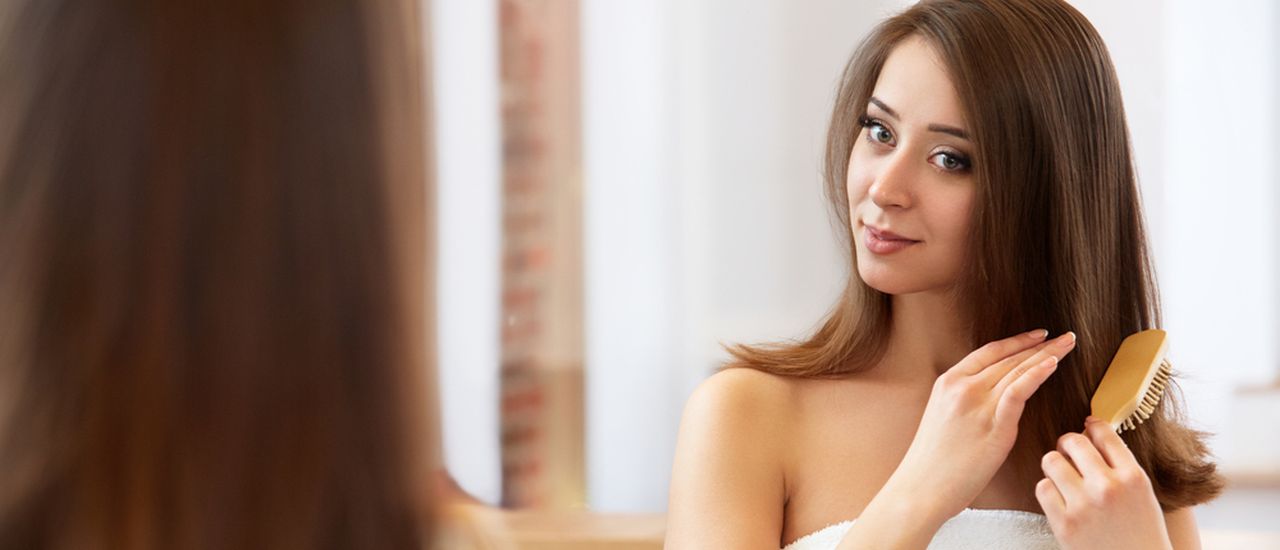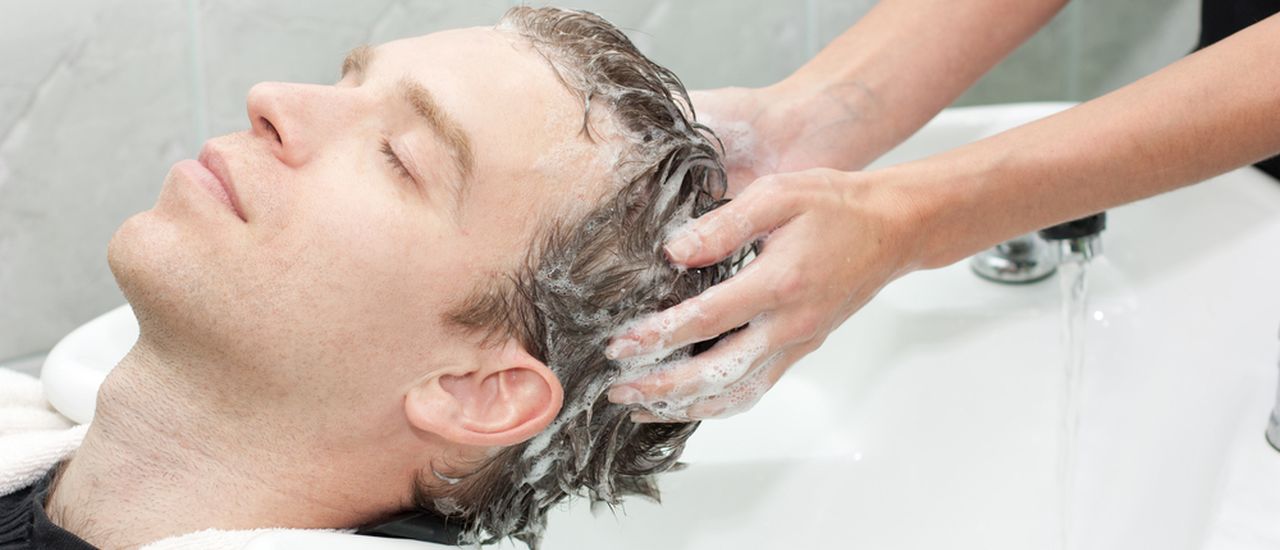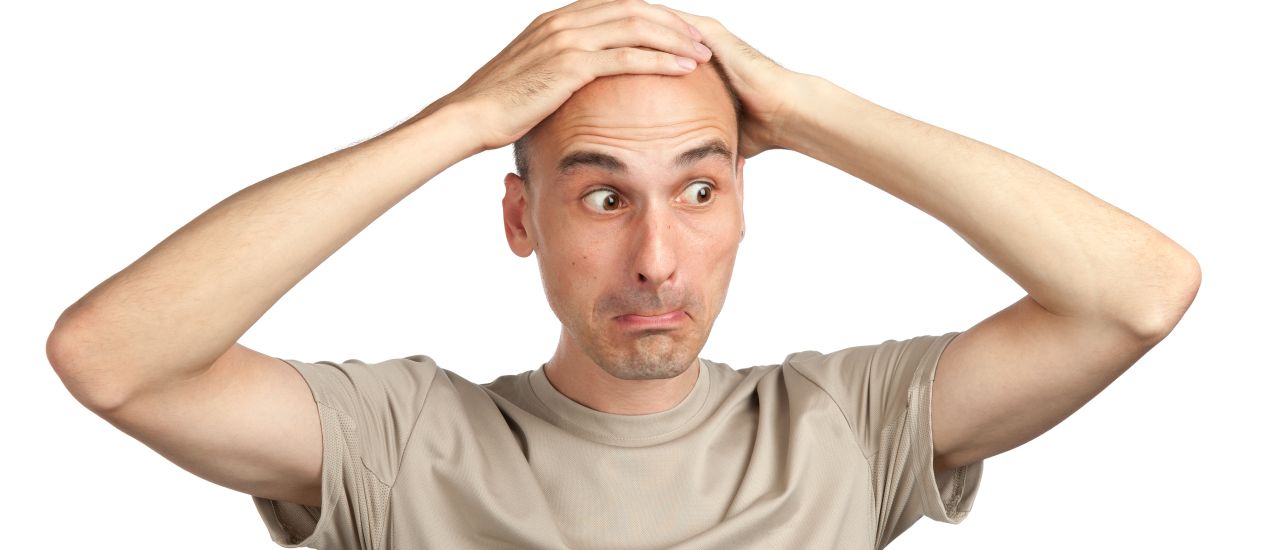Are you struggling to find the right product for your hair, or simply looking for a cheaper option? We’ve scoped out some natural remedies that make good alternatives to expensive products. Bonus: they can also help heal pesky hair problems.
Remember: As with any other natural oil, it’s important to do a patch test first: rub it on a small part of your skin, such as your arm or hand, and give it a few hours to make sure it doesn’t irritate your skin.
1. The problem: hair breakage and split ends.
The solution: coconut oil.
Coconut oil is the only oil in hair products that can minimise protein loss, says a study in the Journal of Cosmetic Science. This means it’s effective in preventing hair breakage, which is great news if you’re regularly shedding hair. This fragrant substance has been used since ancient times in India for hair grooming, thanks to its moisturising properties.
How does it do this? The molecules in the oil get into the hair shaft, and repairs damaged, dry hair. They then seal the outside part of each hair, (the cuticle), that keeps it from breaking. Coconut oil also contains lauric acid, capric acid and Vitamin E to increase and retain hair strength.
How to use it
Rinse your hair before shampooing and apply a tablespoon of coconut oil from the ends of the hair up to the scalp. If you have an oily scalp, only use coconut oil from the middle down toward the ends, as it can be too heavy for people with oily scalps. Cover with a shower cap and leave on for at least 10 minutes, or preferably overnight. Shampoo and condition as normal.
2. The problem: slow-growing hair.
The solution: castor oil.
Although there’s no clinical evidence claiming that castor oil is a remedy for alopecia (hair loss), the oil has been used for centuries. Castor oil can kill viruses and bacteria, making it a popular treatment for dry scalp and scalp fungus, which are indirectly linked to slower hair growth. Castor oil also contains Omega-6 and 9 beneficial fatty acid, which condition your scalp.
The reason why castor oil could possible help stimulate hair growth, is because it contains ricinoleic acid which increases circulation to the scalp. The increase in circulation is what could help with hair growth.
How to use it
Apply castor oil to damp hair and the scalp and let it soak in for a few hours, preferably overnight if possible. Wash the oil out of the hair with your normal shampoo and condition afterwards. If you find the smell a bit strong, add a few drops of an essential oil like lavender to mask the smell.
3. The problem: dull hair colour
The solution: a tea rinse
Tea’s not just for drinking; it’s great for your hair too. Say thanks to its medicinal, rejuvenating properties. Rinsing your hair with tea can make it shinier, and add a new lease of life to colour-treated hair. Tea contains antioxidants which can help fight sun damage that dries out the hair. Use chamomile tea for blonde hair, Rooibos for red hair, and black tea for brunette or black hair.
How to use it
Use the tea as your final rinse after a wash. Simply brew a pot of your preferred tea, let it cool and rinse your hair after shampooing and conditioning. Do not rinse again.
4. The problem: chemically damaged hair
The solution: Argan oil
Argan oil comes from the unroasted kernels of the Argania Spinosa fruit, and has become the latest star of hair and skincare products. There’s good reason for the popularity, though, as its therapeutic benefits have been claimed by Moroccans for more than eight centuries. In a study done on chemically treated and coloured hair, it’s been shown that Argan oil contains oleic and linoleic acids, which reduce breakage and upward bending of the hair cuticle, leading to a damaged, dull appearance. The Journal of Pharmacy and Pharmacology also mentions that Argan oil’s high content of monounsaturated fatty acids can benefit the overall condition of the scalp and hair.
How to use it
Use pure oil as a leave-in treatment after your wash. Rub a few drops of oil between your palms and massage through towel-dried or damp hair before styling.
5. The problem: dandruff
The solution: tea tree oil
Dandruff can have several causes, like dry scalp or a skin condition like eczema, psoriasis or a yeast fungus called Malassezia. Tea tree oil is known for its antifungal and antimicrobial properties and is said to be an effective solution to dandruff. A study in the Journal of the American Academy of Dermatology has shown that only five percent of tea tree oil in shampoo can significantly provide relief for dandruff. If you do consider using tea tree oil, be careful of inhaling or swallowing it as the concentrated form can cause irritation or digestive problems.
How to use it
Simply add a couple of drops of tea tree oil to your regular shampoo before applying to your hair. If you suspect that your current shampoo might cause scalp irritation, switch to a shampoo with a gentler formula first.
References
- http://onlinelibrary.wiley.com/doi/10.1002/ejlt.200700220/full
- https://pdfs.semanticscholar.org/59fc/18f65b86908a393a5646aeb3c6a244ac08db.pdf
- https://www.researchgate.net/profile/Robson_Gama/publication/273687487_Hair_Protective_Effect_of_Argan_Oil_Argania_spinosa_Kernel_Oil_and_Cupuassu_Butter_Theobroma_grandiflorum_Seed_Butter_Post_Treatment_with_Hair_Dye/links/5576ff8808aeacff20004304.pdf
- https://www.ajol.info/index.php/tjpr/article/view/14660







